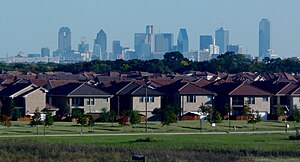The small communities that dot the picturesque mountain landscape outside Boulder, Colo., conjure up an image from long before the great recession. Here the manicured lawns and expensive cars are a testament to the achievements of a fiercely independent and educated middle class; a 21st century version of suburban bliss. But often these days, the closed doors of well-kept houses hide a decidedly different reality: hushed conversation about food stamps and Medicaid, depleted bank accounts and 401K’s, kitchen shelves stocked with groceries from food pantries.
"It's this dirty little secret,” said Joyce Welch, a stay-at-home mother of three whose husband, a mechanical engineer, lost his job six months ago. “Everybody is supposed to be able to buy the new car, supposed to buy the new house. And what we don't talk about is people who struggle, and they're struggling more and more." The Welch family lives in Superior, a Boulder suburb that was listed by Money Magazine as one of the “Top 20 best places to live in America” in 2011. Neighboring Louisville was ranked number one.
The evidence that times are rough for many suburban middle class families is not merely anecdotal. For Dateline NBC’s upcoming special “America Now: Lost in Suburbia,” airing Sunday, June 24th at 8pm/7c, Boulder County's Department of Housing and Human Services provided the number of Louisville and Superior residents that relied on public safety nets to make ends meet. And while these affluent communities still boast some of the lowest poverty levels in Colorado, the statistics were nonetheless startling: since 2008 the combined number of families on Medicaid more than doubled, as did the number of people utilizing food assistance. Lafayette, another well-to-do suburb in East Boulder County experienced similar increases.
And it isn’t just happening in Boulder County. A 2011 study by the Brookings Institute revealed that for the first time in United States history there were more poor people living in the suburbs than in cities. The research, based on the most recent United States Census data, showed that a record 15.4 million suburban residents lived below the poverty line last year, up 11.5% from the year before, and that “by 2010, suburbs were home to one-third of the nation’s poor population—outranking cities (27.5 percent), small metro areas (20.5 percent), and non-metropolitan communities (18.7 percent)."
Read the rest of the article

No comments:
Post a Comment